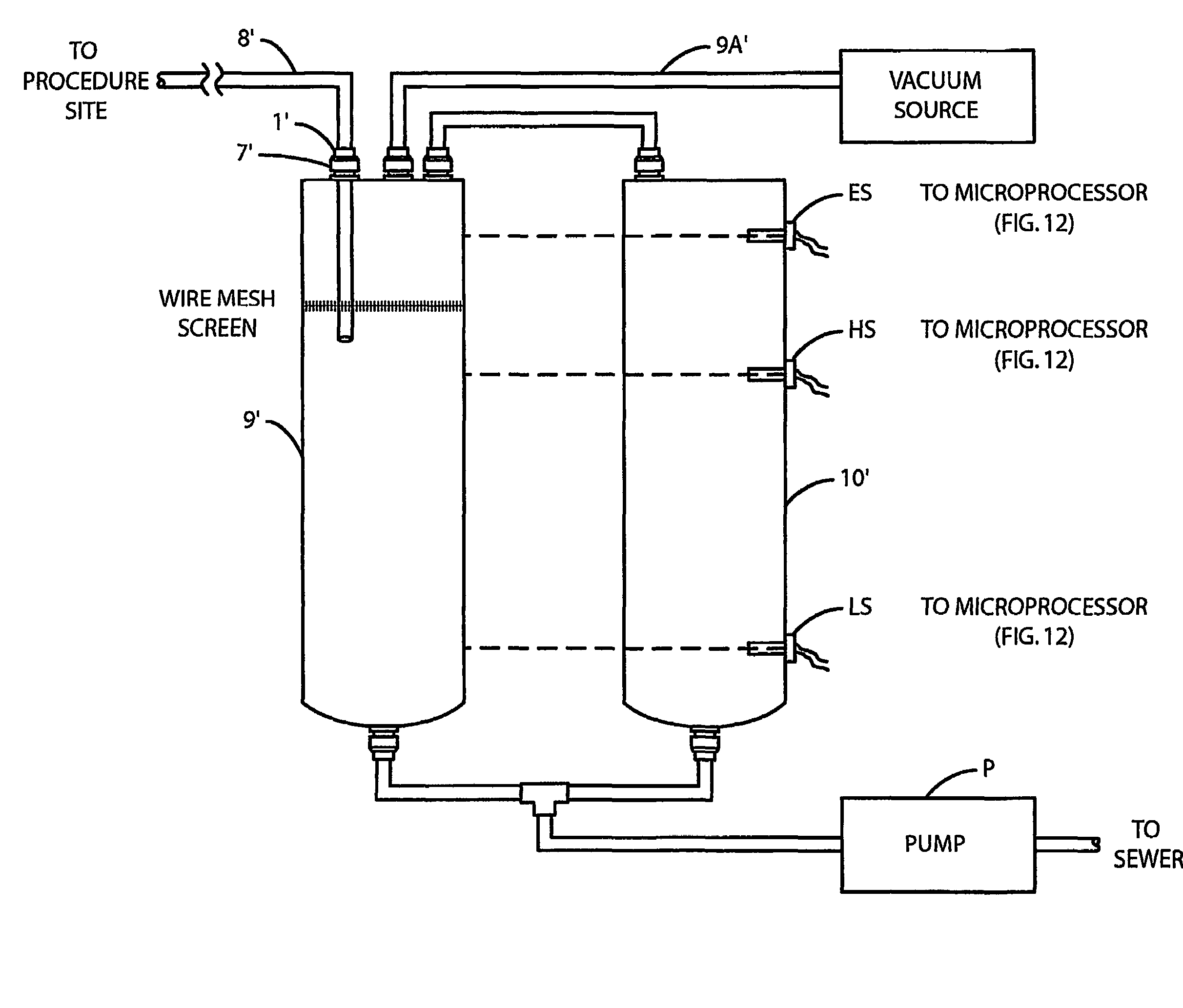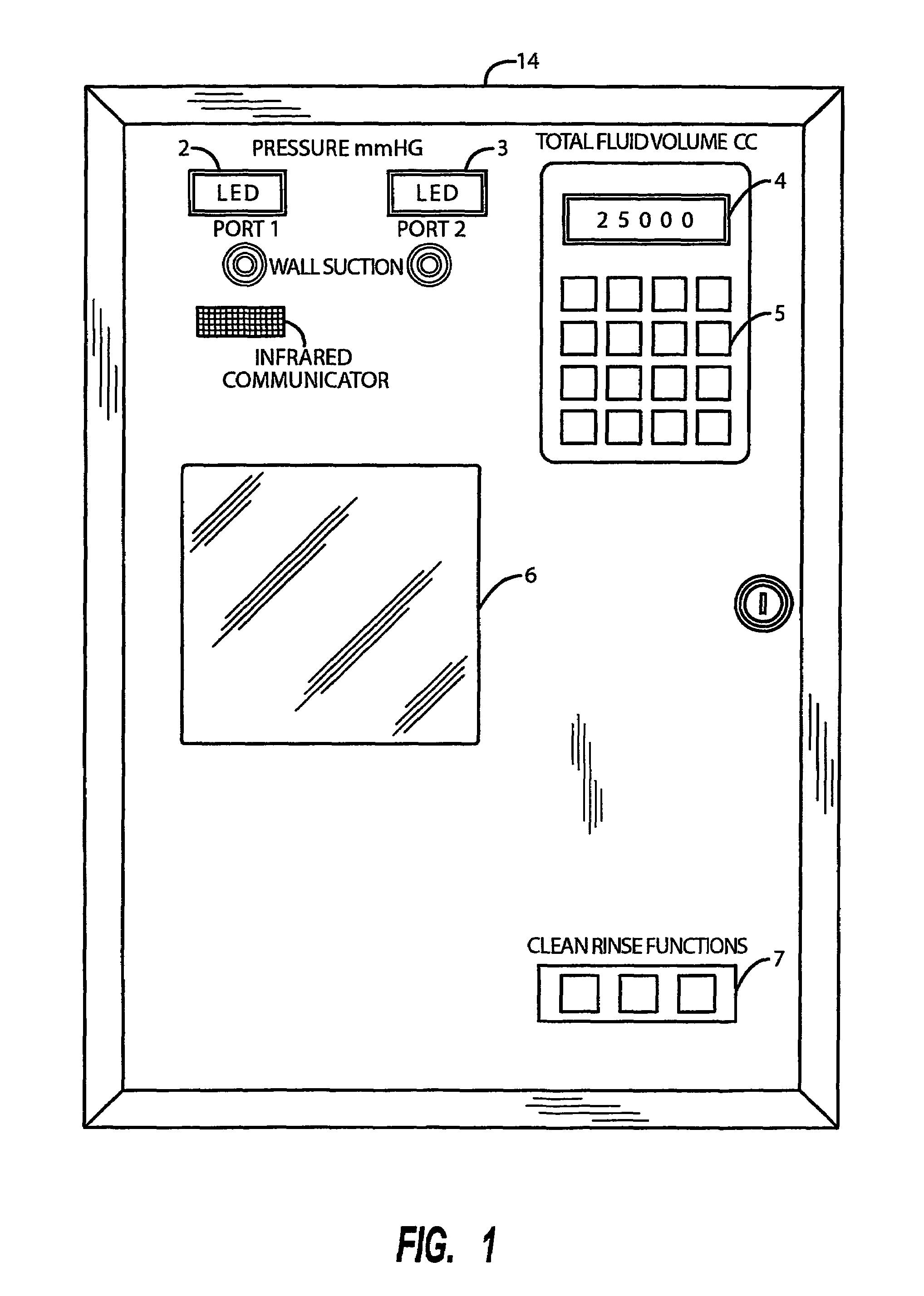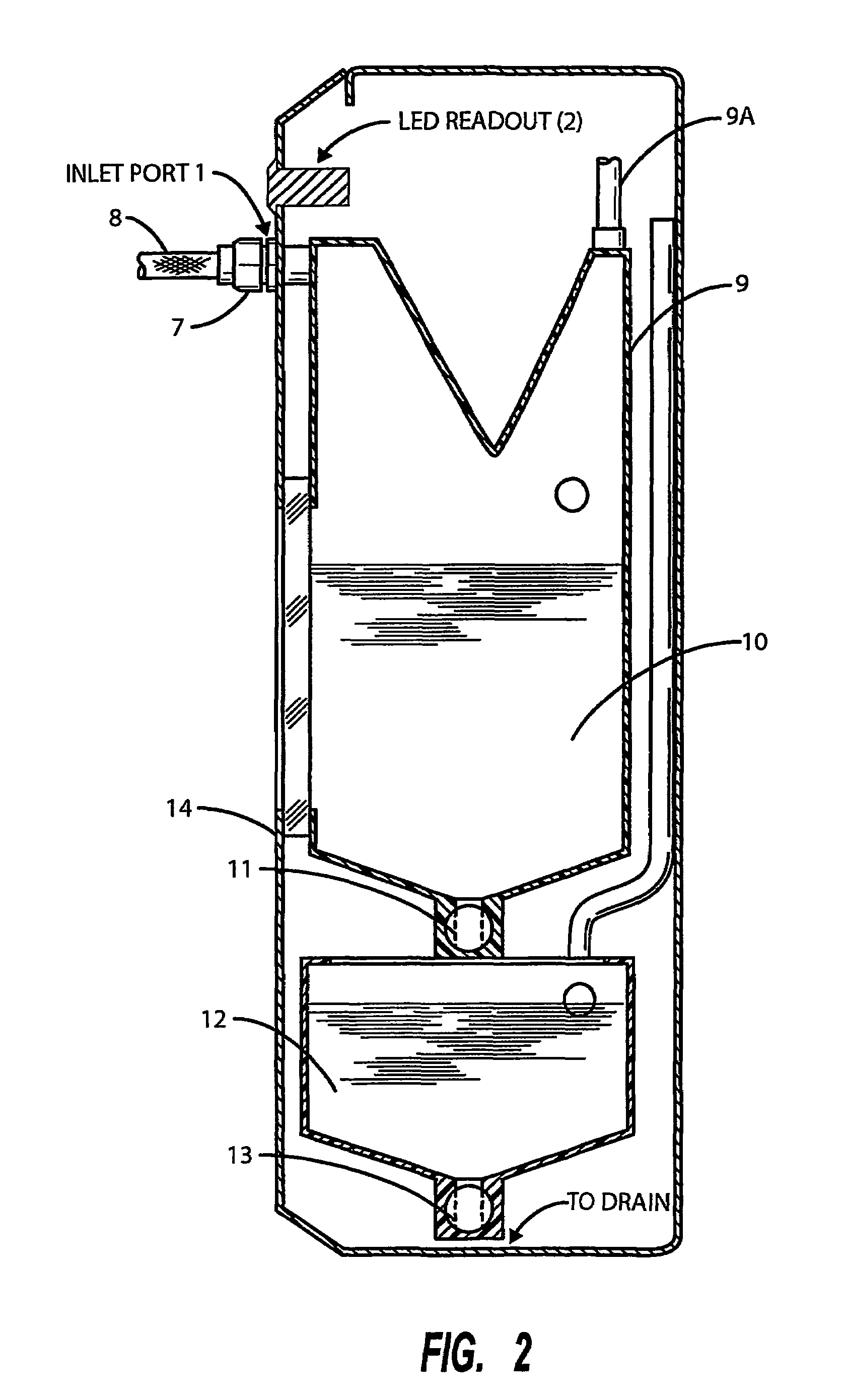Method and apparatus for disposing of liquid surgical waste for protection of healthcare workers
a technology for healthcare workers and waste, applied in the field of surgical procedures, can solve the problems of exposing the healthcare worker to the most risk of direct contact or splash exposure, the method for the removal, containment and disposal of high volume wastes containing potentially hazardous materials, and the inability to provide adequate protection for healthcare personnel assigned to the disposal of biohazardous wastes. to achieve the effect of reducing the contact and potential exposure of healthcare personnel
- Summary
- Abstract
- Description
- Claims
- Application Information
AI Technical Summary
Benefits of technology
Problems solved by technology
Method used
Image
Examples
Embodiment Construction
[0065]With regard to fastening, mounting, attaching or connecting components of the system of the present invention to form the connector or the system, as a whole, unless specifically described otherwise, such are intended to encompass conventional fasteners such as screws, nut and bolt connectors, snap rings, clamps, such as hose clamps, screw clamps and the like, rivets, toggles, pins and the like. Components may also be connected or coupled by welding, friction fitting or deformation. Electrical components and connections may be made using appropriate electrical components and connection methods including conventional components and connectors, suitable display devices such as digital or analog devices, LED's or other light sources and the like and suitable microprocessor or integrated electrical components. Measuring devices, such as flow meters, sensors transducers and the like for measuring volume, flow rate, weight, or liquid quantities, may be selected from such measuring d...
PUM
| Property | Measurement | Unit |
|---|---|---|
| pressure | aaaaa | aaaaa |
| volume | aaaaa | aaaaa |
| vacuum | aaaaa | aaaaa |
Abstract
Description
Claims
Application Information
 Login to View More
Login to View More - R&D
- Intellectual Property
- Life Sciences
- Materials
- Tech Scout
- Unparalleled Data Quality
- Higher Quality Content
- 60% Fewer Hallucinations
Browse by: Latest US Patents, China's latest patents, Technical Efficacy Thesaurus, Application Domain, Technology Topic, Popular Technical Reports.
© 2025 PatSnap. All rights reserved.Legal|Privacy policy|Modern Slavery Act Transparency Statement|Sitemap|About US| Contact US: help@patsnap.com



